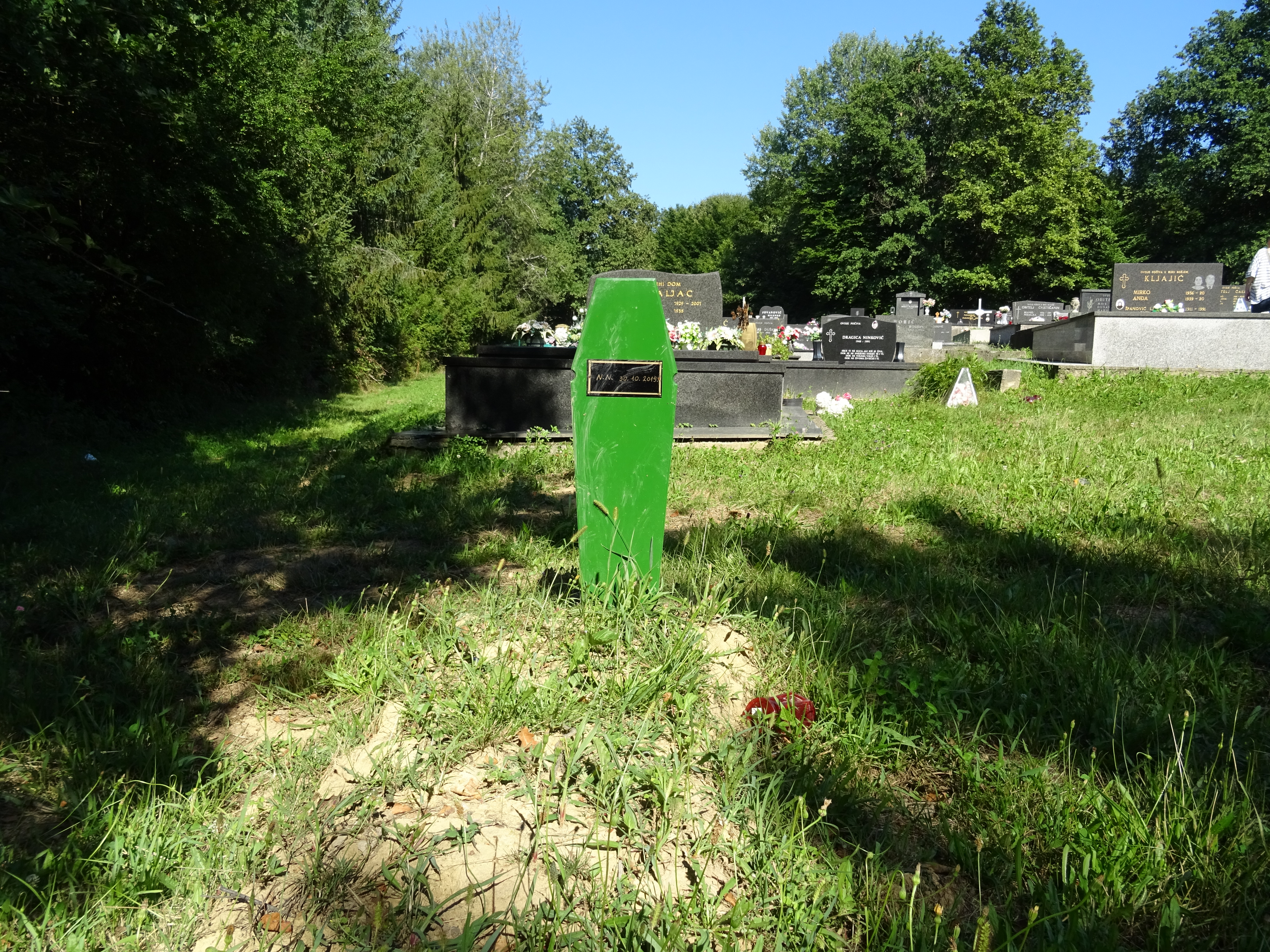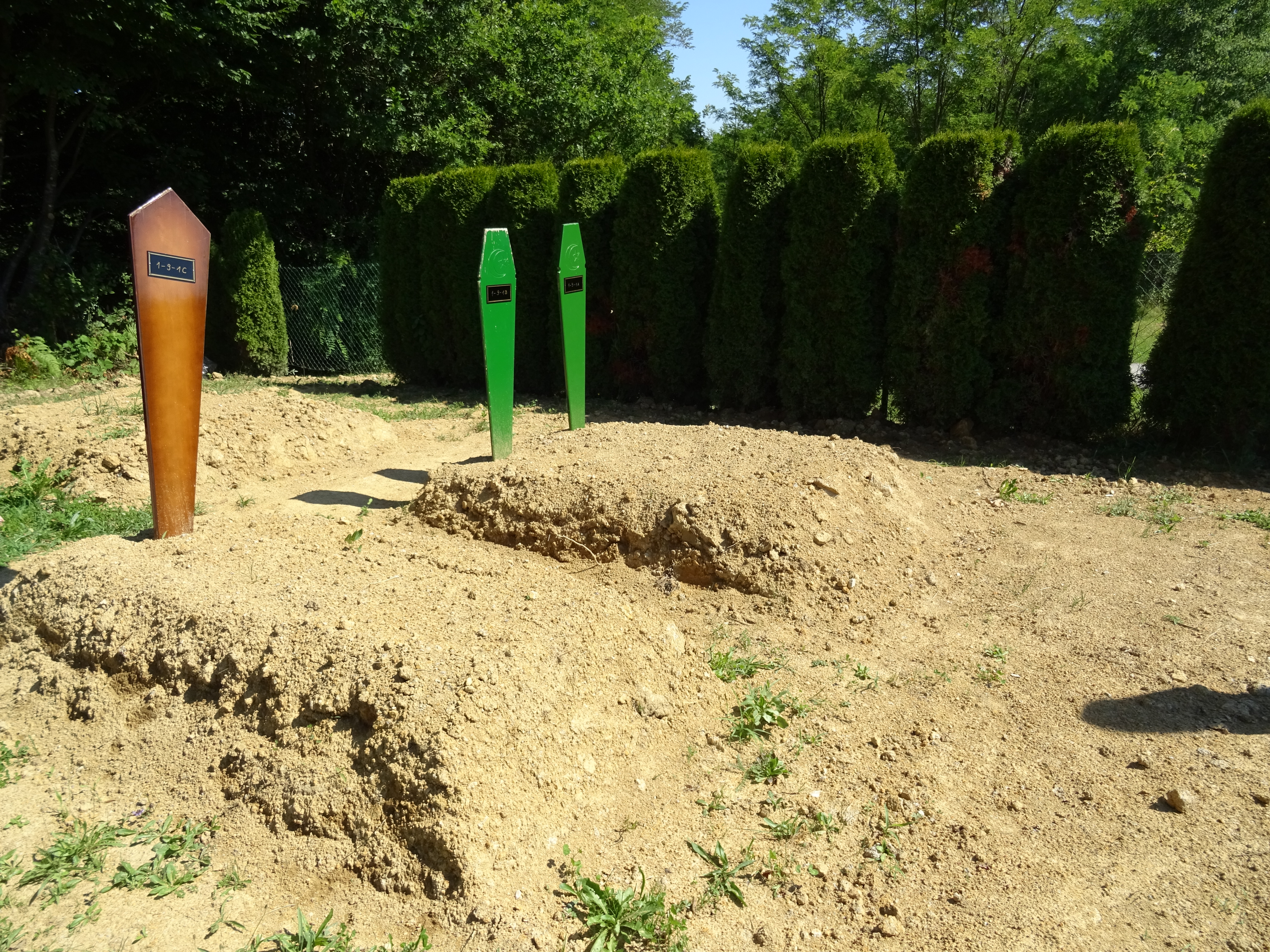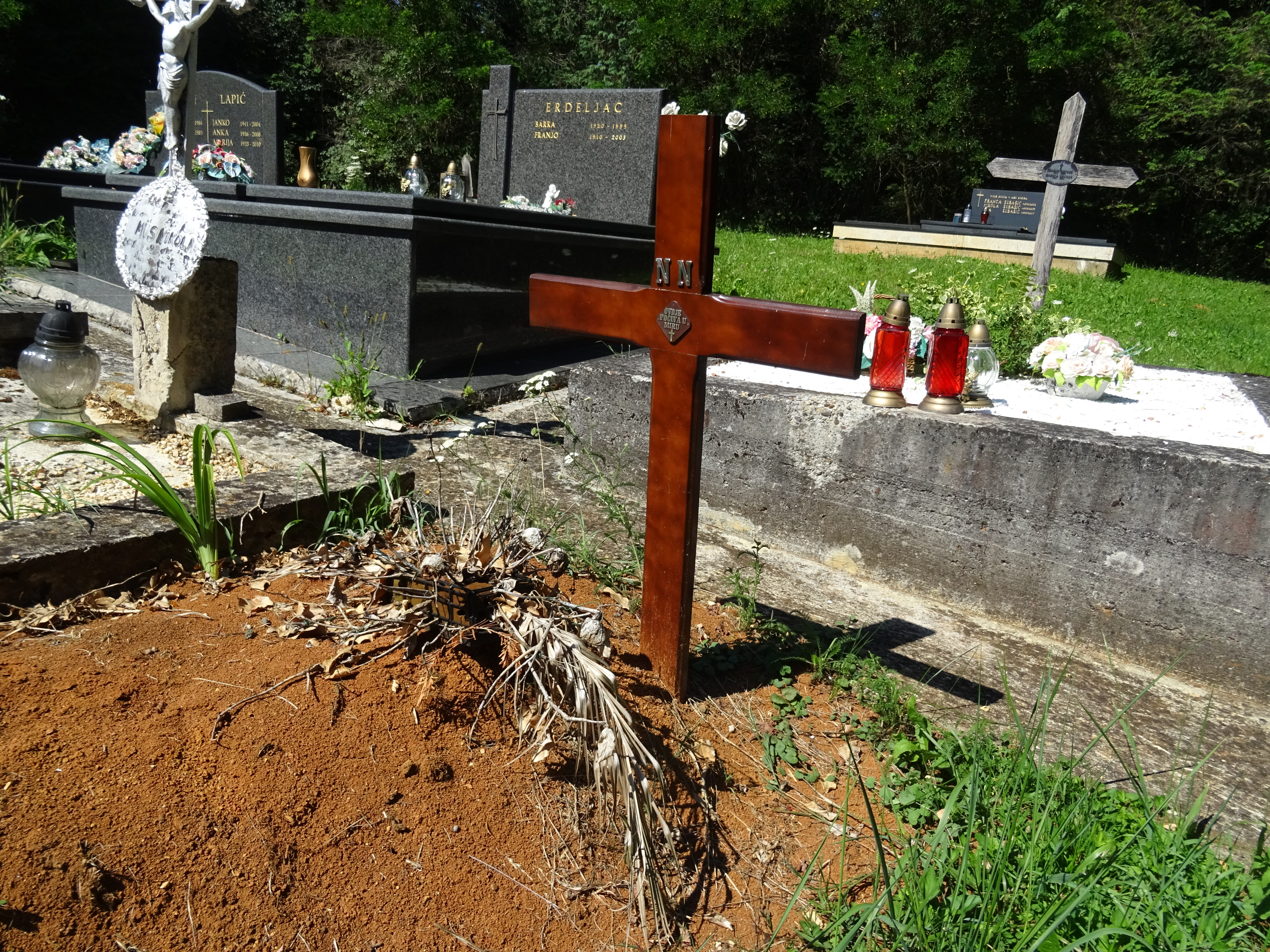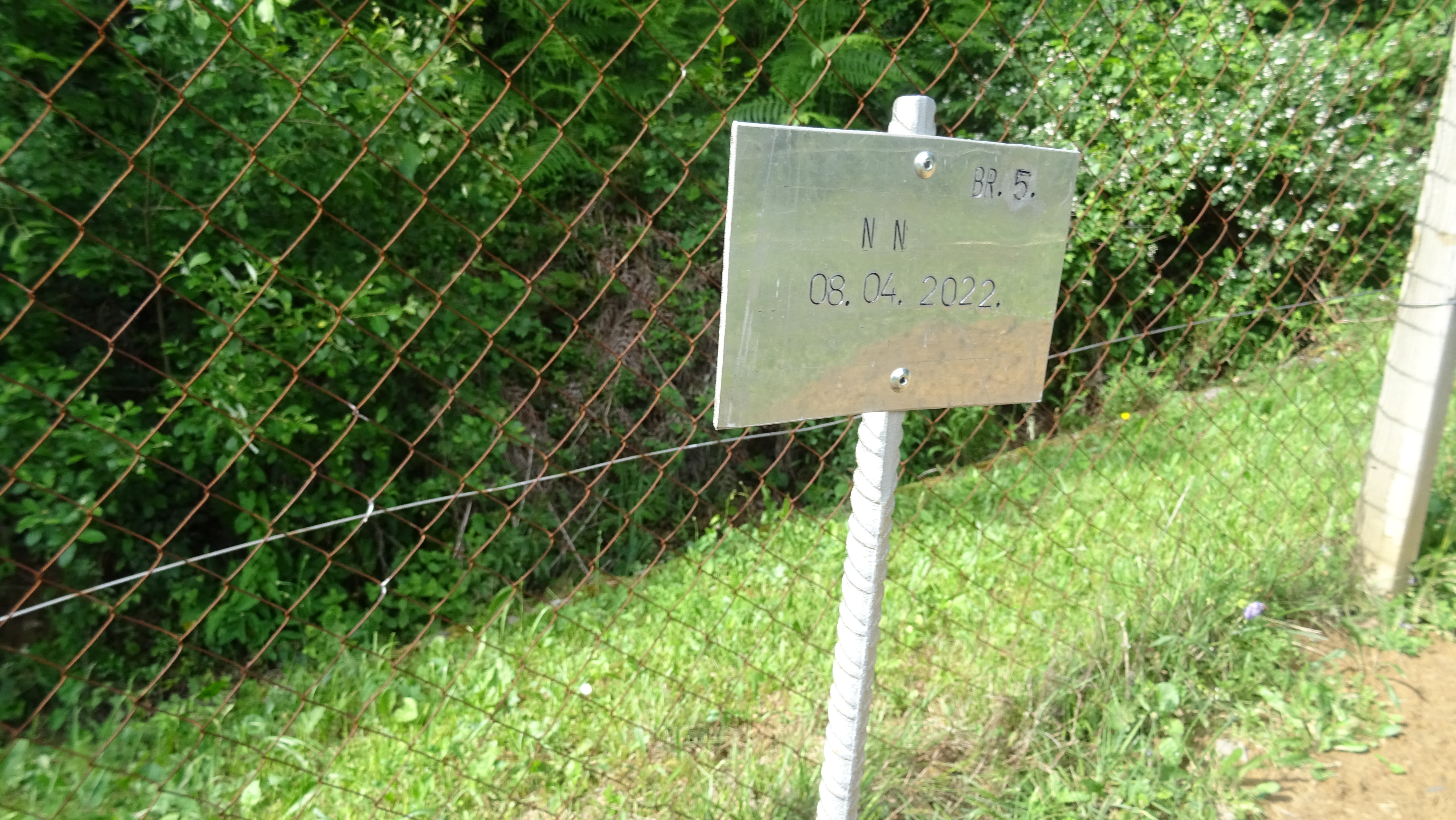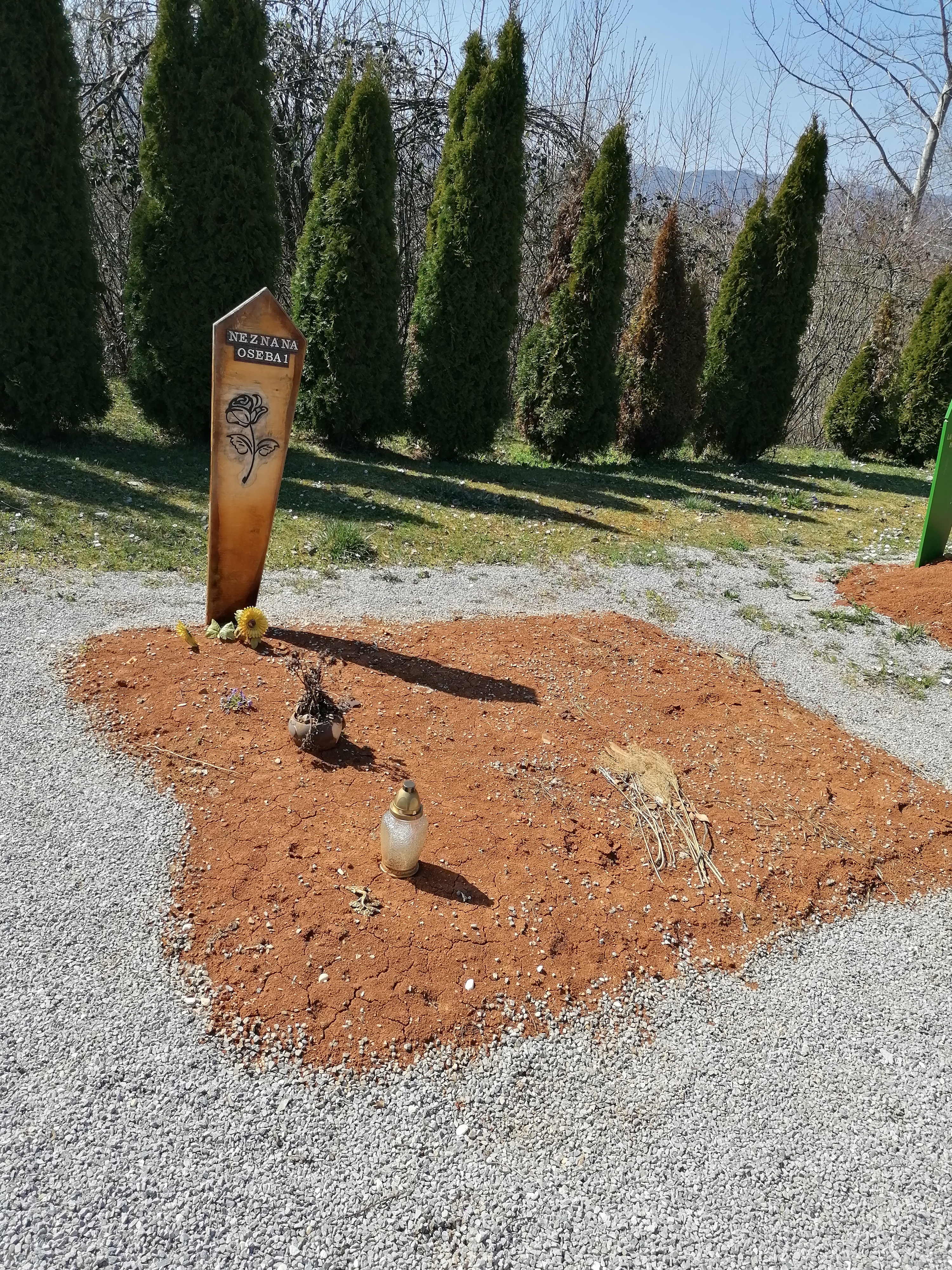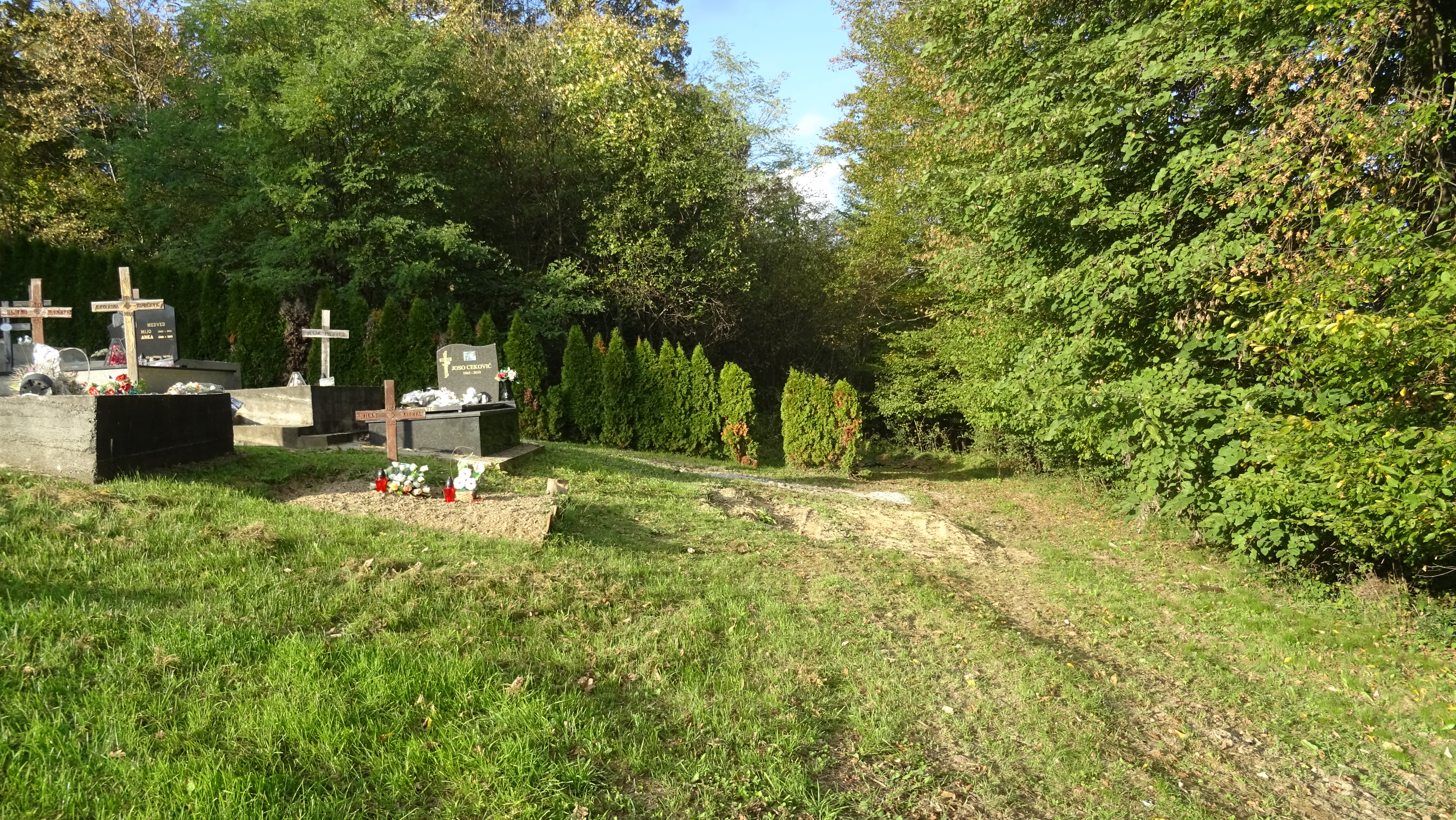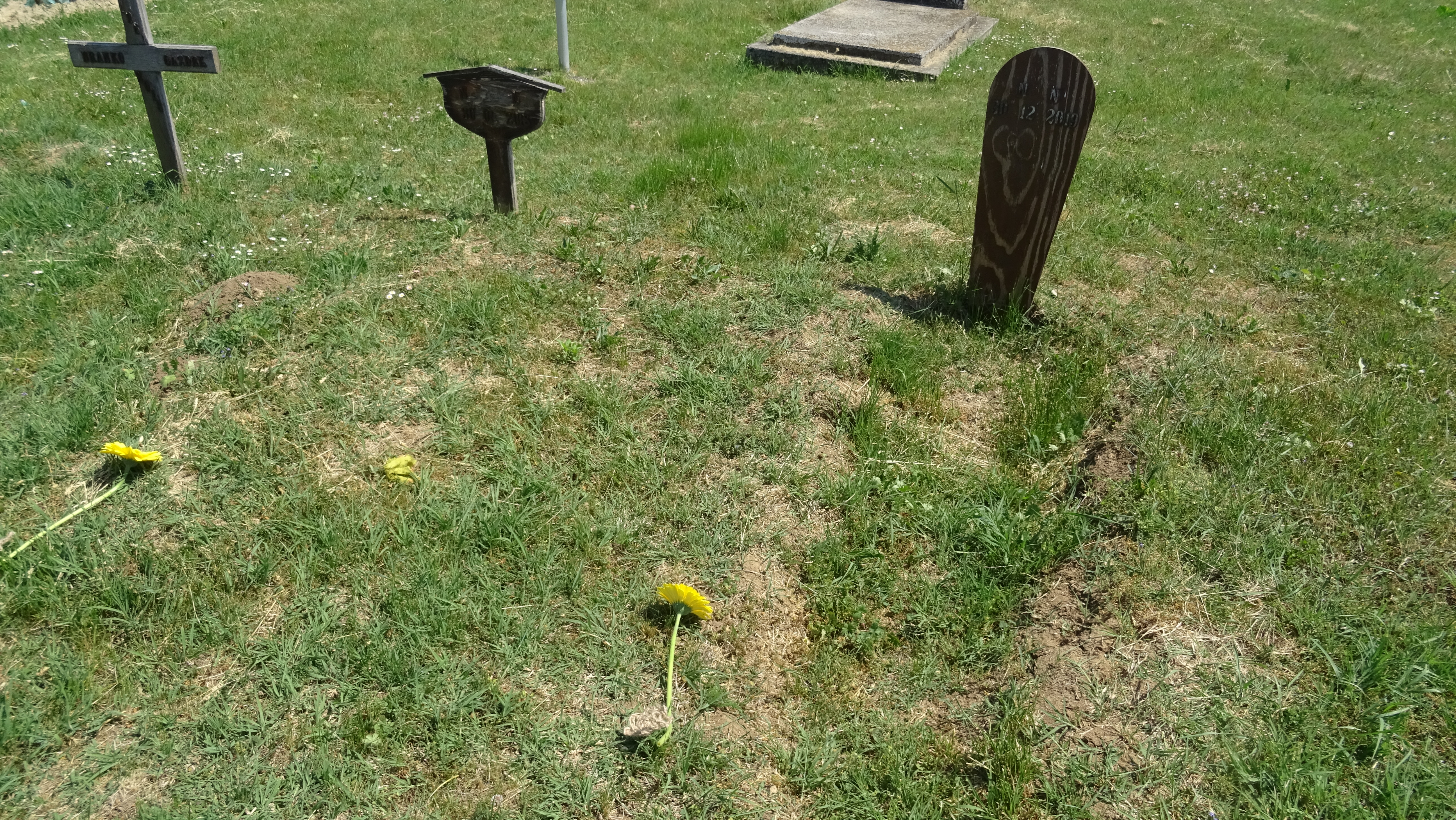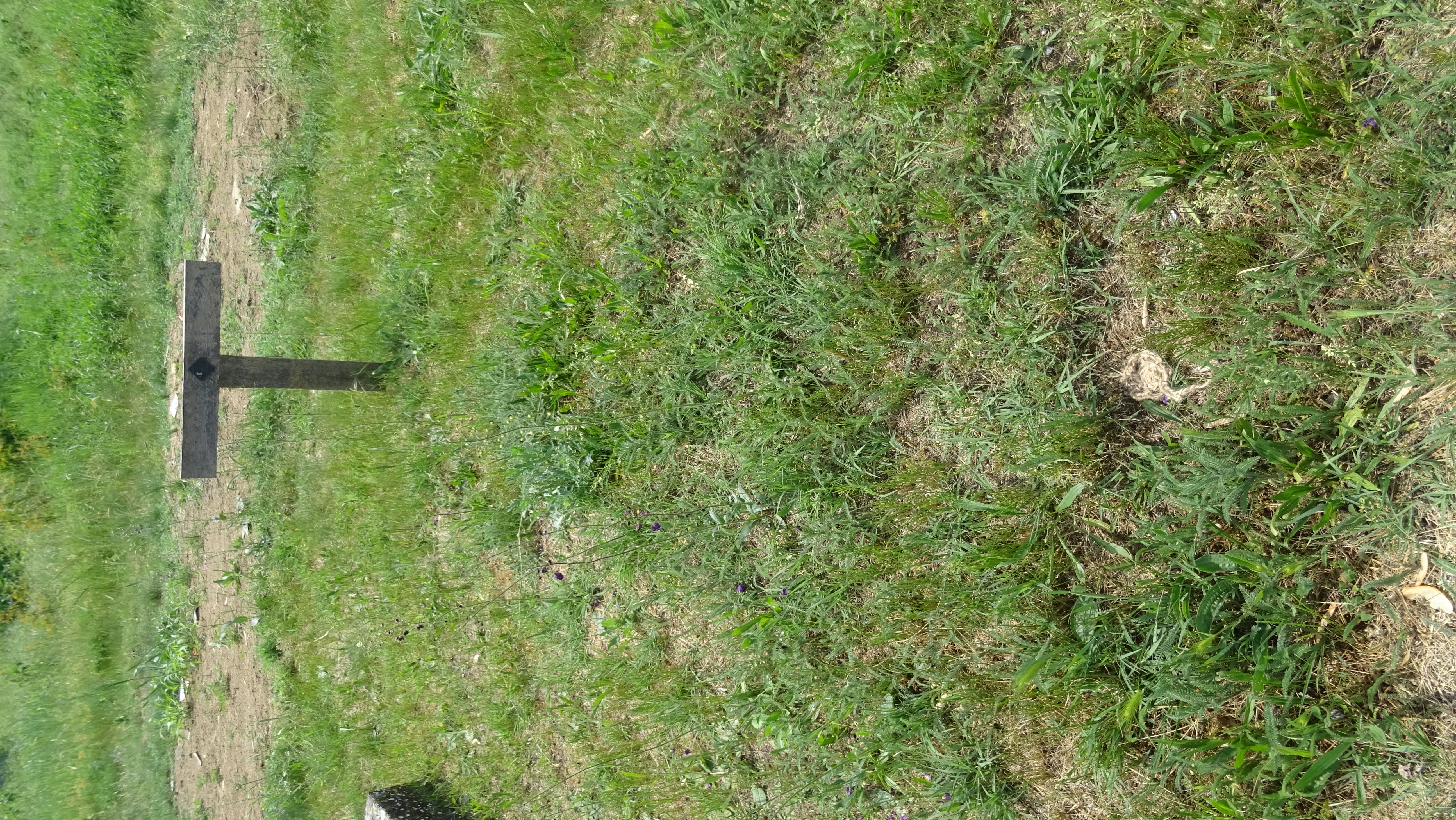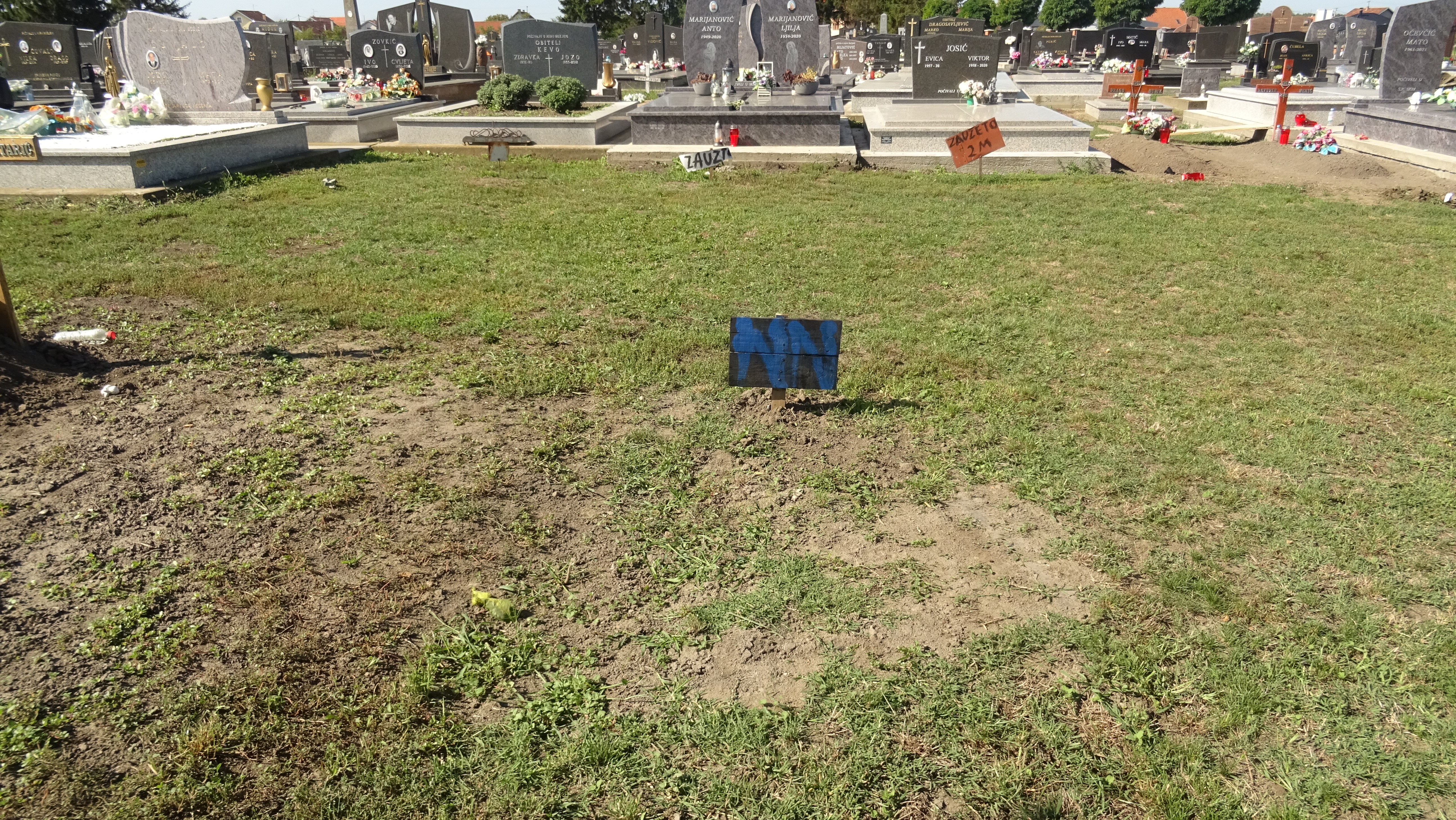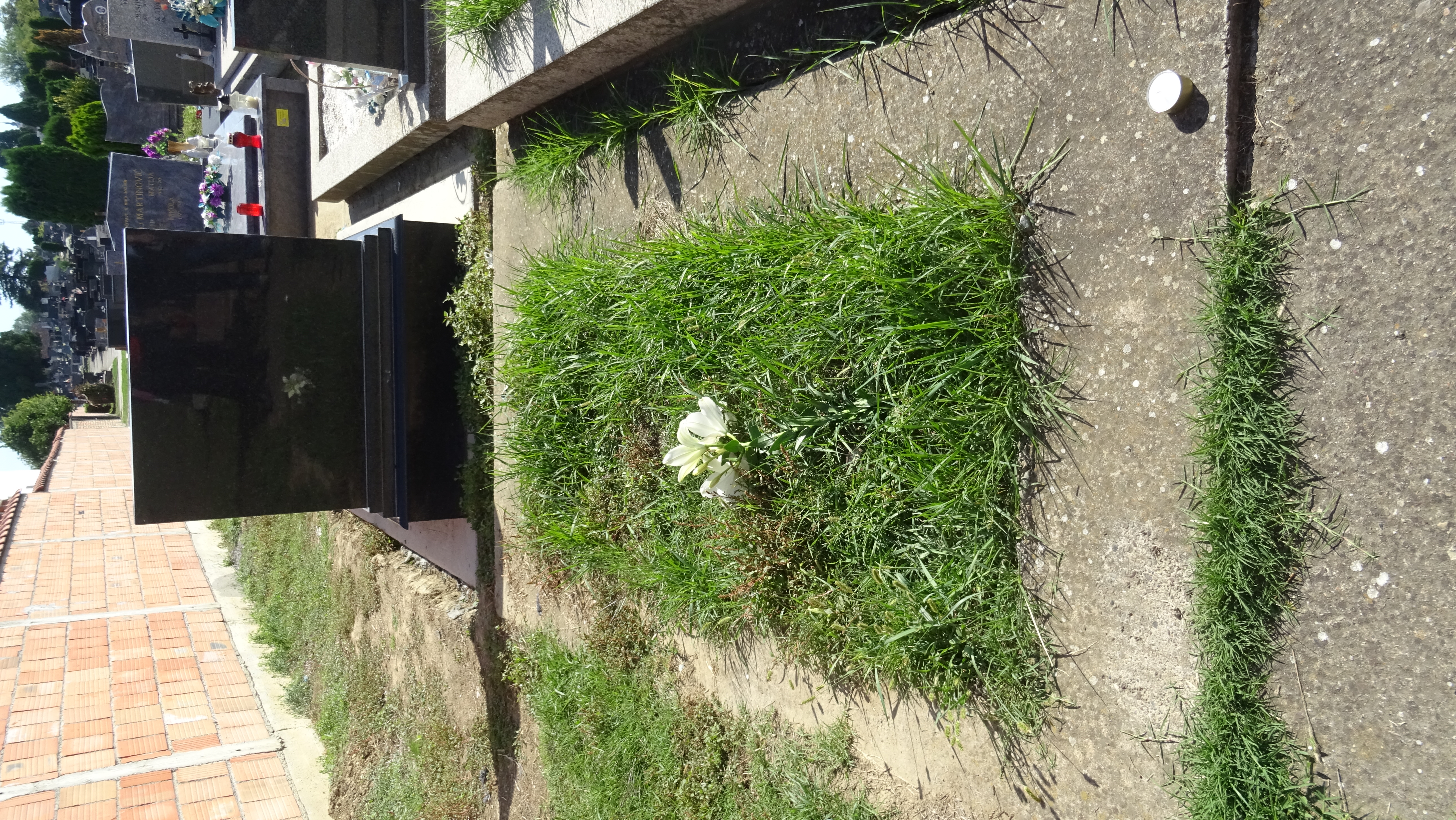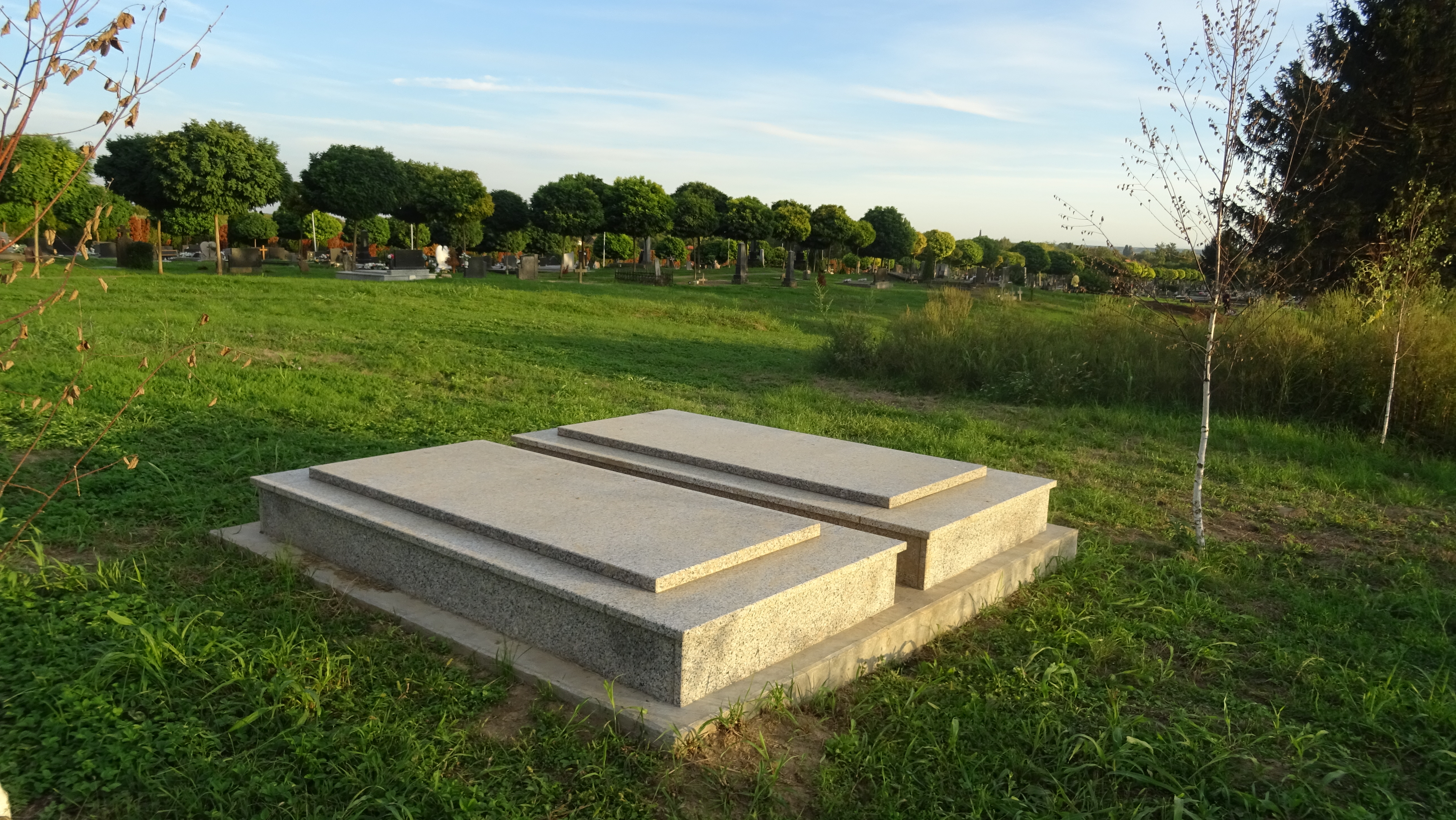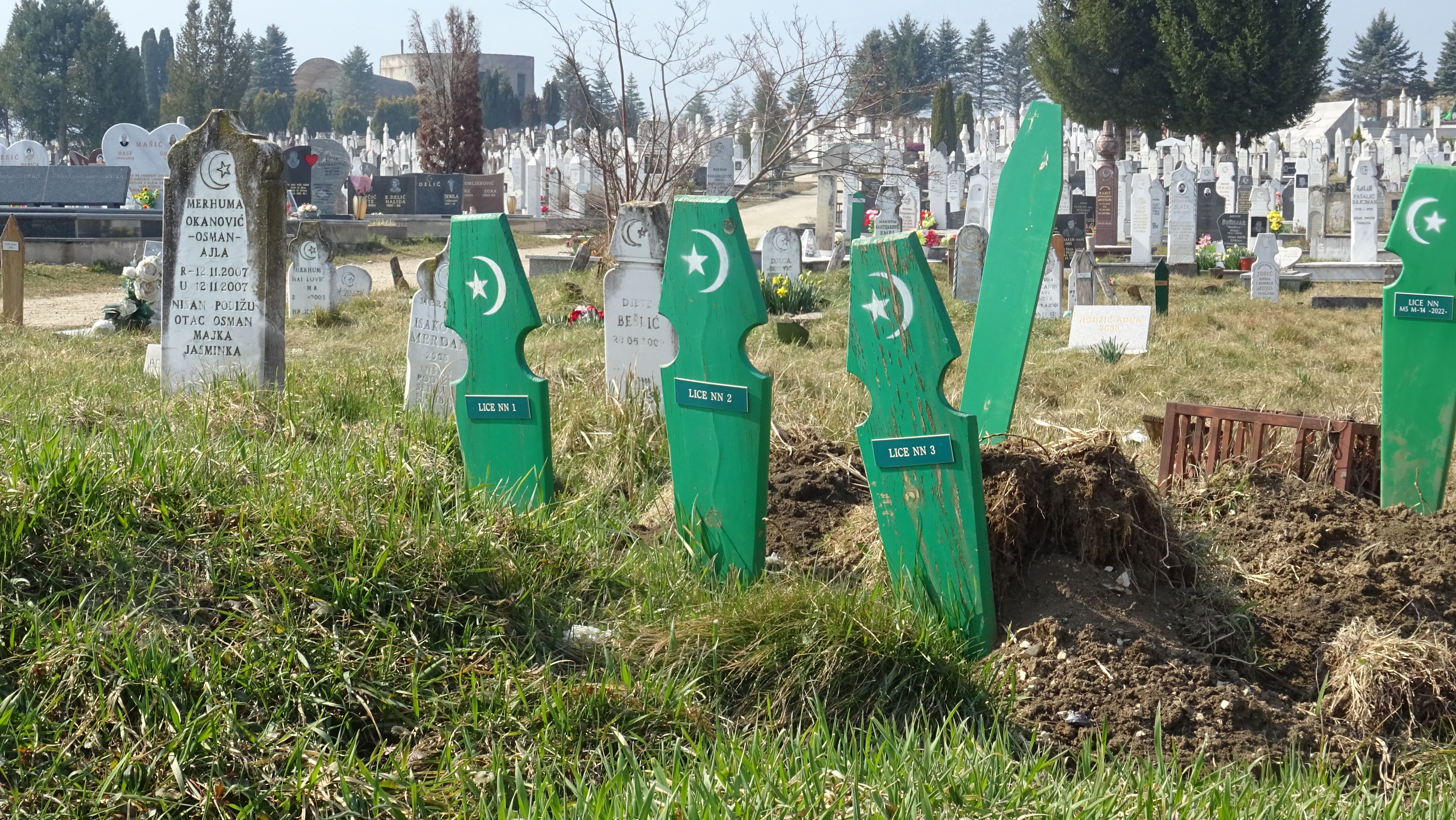Disappeared
Despite constant surveillance and focus on the border, border deaths are often invisible, as emphasized by the first systematic studies on the phenomenon (Weber and Pickering 2011: 52). As part of illegalized, clandestine routes through isolated areas without people, many of these deaths will likely remain hidden or unknown forever. Especially since the reporting of an accident or death on the journey can lead to detention and deportation, as was the case for a group of Algerians who, in March 2019, were first detained in Croatia after reporting the fall and death of a group member, and later expelled to Bosnia and Herzegovina.
In the Mediterranean Sea, the deceased often disappear without a trace, even though their deaths are not necessarily hidden (Albahari 2015: 114). On the other hand, in forests, rivers, deserts, and other mostly inaccessible terrains that are destructive to the bodies of the deceased, people die without a trace and far from sight (cf. history of border deaths). In Croatia, officially, one migrant died because of a mine, but those familiar with the issue presume, as we learned during one of the field researches, that there are “who knows how many. When someone is killed by a mine, they’re not easy to find. And because of the animals as well.” Exposed to specific temperature conditions, animals, sunk to the bottom of rivers or caves, the bodies of the deceased disintegrate over time and disappear. These missing persons can be considered victims of what Jason De León refers to as necroviolence, which is performed and produced through the specific treatment of the deceased’s body — primarily through neglect in this particular context — “that is perceived to be offensive, sacrilegious, or inhumane by the perpetrator, the victim (and her or his cultural group), or both” (2015: 69). This is a historically well-known and variable form of violence in which the deceased, as Creon decreed for Polynices, is denied grave and funeral rites. In the words of Sophocles' Antigone, Creon called the following for Polynices: “let him lie unburied, his body devoured by birds and by dogs and mangled for the seeing.”
The fear of death, which visibly and invisibly permeates the preparations and attempts at the game (Augustová 2021: 210-212), intertwines with the fear of disappearance (Kobelinsky 2017, according to Schindel 2020a: 393) and death which is unknown, a life that is not mourned, and a body that is not buried. For families and loved ones, a disappearance signifies an ambiguous loss. Torn between hope and despair, awaiting news of the missing person while also fearing it (cf. Boss 2000: 8-9), they have to deal with administrative agonies, unresolved family and property-law ramifications (Mirto et al. 2020: 109), helpless to initiate legal steps without the bodies: seeking investigation and accountability for the deceased.
At the same time, many, if not most, of the found bodies remain unidentified (cf. Dearden et al. 2020: 57; Cattaneo et al. 2023; Tapella et al. 2016: 57). In Europe, the identification process is further complicated by the lack of established national and international procedures for connecting the physical existence (the body) and civil register data (the name), the search for missing persons and their relatives, as well as protocols for systematically collecting, storing, and comparing data on found bodies and missing individuals (cf. Cattaneo et al. 2023). Identification, officially, in a narrower sense, is carried out by the police and depends on a whole range of circumstances and actors. For example, it may depend on how the death occurred, whether a witness can testify to the identity of the victim, can the identity be determined based on personal documents found with the deceased person, or if DNA or fingerprint analysis is required, and so on. In practice, however, the events that unfold from the moment a disappearance is reported is much more complex. For refugees and other migrants who go missing in transit, procedures that are almost automatically initiated for missing citizens, such as publishing a “profile” on the National Missing Persons Database website, initiating a “search,” informing the entire operational police force, checking with other agencies, conducting interviews with anyone who might have useful information about the missing person, and similar measures, are started, if at all, only with additional efforts. The invisibility and exclusion that followed refugees and other migrants in life are also carried into death (Kovras and Robins 2016). From this perspective, the chaotic and challenging postmortem itineraries, as well as the prolonged and often inconclusive identifications, are revealed as a consequence and continuation of illegalization. In 2022, one of the "erased" residents of Slovenia was buried six long months after his death, as his sixty years of life and the testimonies of his friends and acquaintances were not sufficient to confirm his identity in the view of state services. His identity had to be determined through DNA analysis.
In the absence of clearly defined and functional procedures, identification in practice depends on the knowledge, competence, power, understanding or lack of understanding of individuals employed in the police, hospitals, local government companies, public prosecutors' offices, etc. It also depends on the agility and policies of national and local communities and institutions, individuals, and organizations, as well as the location where the person died. In some Croatian municipalities and counties, almost all deceased individuals are identified, while in others, none are identified. International and cross-sector cooperation is almost nonexistent. On some borders, such as the U.S.-Mexico border, functional procedures have been established due to the efforts of families and experts (e.g., Colibrí Center for Human Rights). Meanwhile, for incidents such as the shipwrecks in the Mediterranean in October 2013, protocols used for identifying disaster victims were tried and adapted (cf. Cattaneo et al. 2023: 150-151).
Identification, and especially repatriation (returning the body to the country of origin), heavily depend on the economic fortune of the deceased person’s family. It also depends on whether a family member can physically come to the country where the person died, contact the police and other services. Additionally, the process is influenced by the agility, policies, and interests of the embassies of the country of origin, as well as the connectedness and presence of communities from the originating country in the country where the death occurred or in its vicinity. Paradoxically, regulations for the protection, collection, and sharing of personal data, the focus on DNA samples and comparisons, as well as the efficiency of services (in the case of quick burials), can, in practice, hinder or even prevent identification (cf. Cattaneo et al. 2023; Perl 2016: 204). Therefore, as Ville Laakkonen emphasizes (2022: 4), instead of talking about the unidentification of the deceased in migration, we can talk about institutionalized non-identification.
People who disappeared and died at the borders, as well as other forms of border violence, such as pushbacks, have recently been linked to directly or indirectly state-organized disappearances, primarily with the desaparecidos — people who disappeared, were kidnapped, and killed in the second half of the 20th century in Latin America (Azarova et al. 2022: 136, 139-140; Distretti 2020; Schindel 2020b: 37). Thus, key places for seeking justice for the missing in Latin America are transferred into the migrant context, i.e. the differences between seeking justice for the deceased and the missing. Disappearance is a crime that persists as long as the missing person remains unfound, or until their death is discovered and declared (Schindel 2020a: 393). States are responsible for providing answers about the disappeared, whether they died and how they died, and they should be held accountable for this (Schindel 2020a: 392). The International Convention for the Protection of All Persons from Enforced Disappearance from 2006 defines a criminal framework under which enforced disappearance “constitutes a crime and, in certain circumstances defined in international law, a crime against humanity”. It is essential that states are not at the center of this framework, as in international law, nor individuals, as in the human rights framework, but rather families and possibly friends as “ a close unit of mutual care.” This is crucial because it aligns with the normative premise in accordance with the lived experiences of many migrants (Azarova et al. 2022: 138).
Today, actors such as the International Commission on Missing Persons (ICMP) or the OHCHR Working Group on Enforced or Involuntary Disappearances (WGEID) (cf. Citroni 2017) include persons who died or went missing at the border within their agenda, expanding the field of potential political and legal interventions (Schindel 2020a: 399). At the same time, there is a proposal for the redefinition of the term so it would connect the missing and deceased at the borders with “social disappearances,” which share common traits with enforced disappearances. These include “absence, invisibility, lack of representation, the impossibility of being put into words or being named” (Gatti 2020: 56). Social disappearances can ultimately have similar effects to enforced disappearances, but unlike enforced disappearances, they are not the result of state persecution directed at individuals. Instead, they affect entire social groups and are based on practices of abandonment and erasure, complete exclusion from the political and legal order, social protection, and frameworks of belonging (Schindel 2020b). Socially disappeared individuals are truncated individuals, bodies separated from their names, names cut off from their history, and stripped of its citizenship papers (Gatti 2020: 47-48). These are groups and individuals whose existence is ignored and denied by states (Schindel 2020b: 11), both in life and in death. They are, in the terminology of Achille Mbembe (2003: 40), the living dead, or, as bodies still alive, as Samir Karim refers to himself and other inhabitants of a Dutch asylum center in the novel Two Blankets, Three Sheets by Rodaan Al Galidi (2020: 131).
17/07/2023
Literature
Al Galidi, Rodaan. 2020. Two Blankets, Three Sheets, a Towell, s Pillow, and a Pillowchase. New York, London, Amsterdam: World Editions. Translated by Jonathan Reeder.
Albahari, Maurizio. 2015. Crimes of Peace. Mediterranean Migrations at the World’s Deadliest Border. Philadelphia: University of Pennsylvania Press.
Augustová, Karoliná. 2021. "Photovoice as a Research Tool of the 'Game' Along the 'Balkan Route'". In Visual Methodology in Migration Studies. Karolina Nikielska-Sekula and Amandine Desille, eds. Cham: Springer, 197-215.
Azarova, Valentina, Amanda Danson Brown and Itamar Mann. 2022. „The Enforced Disappearance of Migrants“. Boston University International Law Journal 40/1: 133-204.
Boss, Pauline. 2000. Ambiguous Loss. Learning to Live with Unresolved Grief. Cambridge: Harvard University Press.
Cattaneo, Cristina, Danilo De Angelis, Debora Mazzarelli, Davide Porta, Pasquale Poppa, Giulia Caccia, Maria Elisa D'Amico, Cecilia Siccardi, Carlo Previderè, Barbara Bertoglio, Morris Tidball-Binz, Douglas Ubelaker, Vittorio Piscitelli and Silvana Riccio. 2023 “The Rights of Migrants to the Identification of their Dead. An Attempt at an Identification Strategy from Italy”. International Journal of Legal Medicine 137/1:145-156.
Citroni, Gabriella. 2017. “The First Attempts in Mexico and Central America to Address the Phenomenon of Missing and Disappeared Migrants”. International Review of the Red Cross 99/2: 735-757.
De León, Jason. 2015. The Land of Open Graves. Living and Dying on the Migrant Trail. Oakland: University of California Press.
Dearden, Kate, Tamara Last and Craig Spencer. 2020. „Mortality and Border Deaths Data Key Challenges and Ways Forward“. In Border Deaths. Causes, Dynamics and Consequences of Migration-related Mortality. Paolo Cuttitta and Tamara Last, eds. Amsterdam: Amsterdam University Press, 53-70.
Distretti, Emilio. 2020. „Enforced Disappearances and Border Deaths Along the Migrant Trail“. In Border Deaths. Causes, Dynamics and Consequences of Migration-related Mortality. Paolo Cuttitta and Tamara Last, eds. Amsterdam: Amsterdam University Press, 112-129.
Gatti, Gabriel. 2020. „The Social Disappeared“. Dossiers, Forum Transregionale Studien 1: 45-61.
Kovras, Iosif and Simon Robins. 2016. “Death as the Border. Managing Missing Migrants and Unidentified Bodies at the EU's Mediterranean Frontier”. Political Geography 55: 40-49.
Laakkonen, Ville. 2022. “Deaths, Disappearances, Borders. Migrant Disappearability as a Technology of Deterrence”. Political Geography 99: 1-9.
Mbembe, Achille. 2003. „Necropolitics“. Public Culture 15/1:1-40. Translated by Libby Meintjes.
Mirto, Giorgia, Simon Robins, Karina Horsti, Pamela J. Prickett, Deborah Ruiz Verduzco i Victor Toom. 2020. "Mourning Missing Migrants. Ambiguous Loss and the Grief Strangers“. In Border Deaths. Causes, Dynamics and Consequences of Migration-related Mortality. Paolo Cuttitta and Tamara Last, eds. Amsterdam: Amsterdam University Press, 103-116.
Perl, Gerhild. 2016. “Uncertain Belongings. Absent Mourning, Burial, and Post-mortem Repatriations at the External Border of the EU in Spain”. Journal of Intercultural Studies 37/2: 195-209.
Schindel, Estela. 2020a. „Deaths and Disappearances in Migration to Europe. Exploring the Uses of a Transnationalized Category“. American Behavioural Scientists 64/4: 389-407.
Schindel, Estela. 2020b. „Mobility and Disappearance. Transregional Threads, Historical Resonances“. Dossiers, Forum Transregionale Studien 1: 17-44.
Tapella, Amelie, Giorgia Mirto and Tamara Last. 2016. „Deaths at the Border. From Institutional Carelessness to Private Concern. Research Notes from Italy“. InTransformazione 5/1: 57-64.
Weber, Leanne and Sharon Pickering. 2011. Globalization and Borders. Death at the Global Frontier. London: Palgrave Macmillan.
